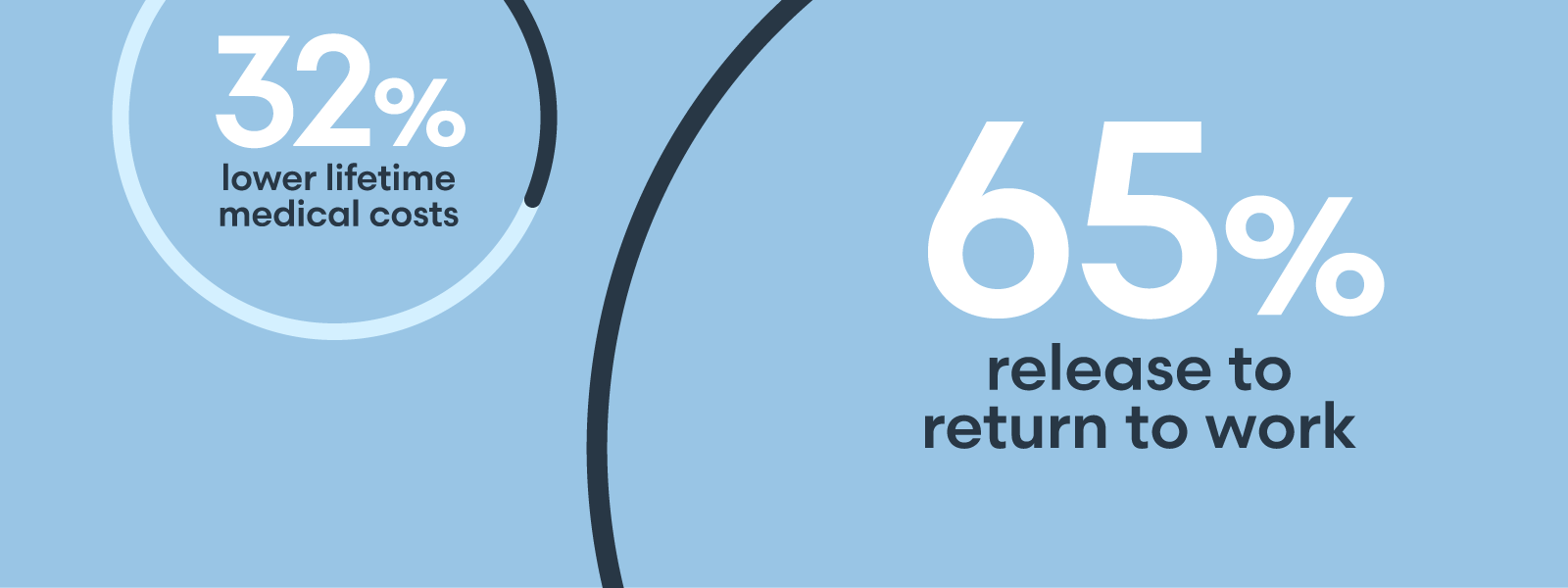

Since 2020, small business formation has soared in the United States, swelling the pool of small-to-mid-sized businesses (what we collectively call "small commercial") by nearly 10 million. That's a lot of businesses to insure. What's more, we estimate that 12 million small businesses don't have any insurance while millions more are underinsured. That amounts to nearly $75 billion in potentially untapped premiums. It's a sizable market opportunity. The question is: How can insurers rapidly underwrite the diverse needs of this growing market? Fortunately, agile and innovative data partners can help. Loss ratios in the small commercial market can be attractive, and scale enables insurers to spread their costs across a wider base of premium. To achieve scale, commercial lines insurers writing businessowners and small package policies can embrace a strategy of underwriting acceleration and automation. What do we mean by automation? For applicants or their agents, it's an insurance application with minimal fields—simply a business name and address. For the insurer, it's a data stream that uses those two inputs to return accurate business firmographics. These firmographics prefill additional application details alongside robust insights into the relevant risk exposures for a holistic view of the risk. Paired with business logic that moves the application through underwriting guidelines and you have the underpinnings of an automated workflow to quote and bind small commercial business at scale. Let's clear up a few possible misconceptions around automation. Call them, "the three can'ts." 1. We can't automate small commercial underwriting because we're not sure we can trust the data. Without high-quality data and analytics, automation may just increase the volume of premium leakage you suffer or the number of desirable risks you're losing to competitors with better pricing. By leveraging a combination of robust firmographic data, property and management analytics, and an analysis of unstructured data from social media and other sources, insurers now have an array of powerful underwriting insights at their fingertips to drive their automation efforts. There are many sources of underwriting data for small commercial risks, but quality datasets and insurance analytics share certain key characteristics: 2. We can't benefit from an investment in automation unless we're automating close to 100 percent of new/renewal business nearly 100 percent of the time. Automation is a journey, one that can accrue significant benefits even if it's just applied to a portion of your book. Consider that, in one survey, seven in 10 underwriters report losing deals because it took too long to process small business applications. By accelerating even a fraction of those applications, you can increase the chances of binding good risks while more efficiently segmenting those outside of your small commercial appetite. The net result: You can scale up your quoting and binding volume and win market share. You'll also be enhancing the experience of your agents. When we surveyed independent agents serving the small commercial market, they ranked accuracy, speed of quote, and ease of submitting an application as the most important elements when dealing with an insurer. Commission rate was a distant fourth. What's more, automation frees up valuable human resources to address more complex risks and nurture customer relationships. For an industry in the midst of a historic talent crunch, even a little automation can help take the pressure off stretched staff. 3. We can't automate because we'll miss critical underwriting details. Speed shouldn't come at the expense of accuracy — and with the correct solution, it won't. The reality is that many critical underwriting details are missed today in workflows that aren't automated. According to our analysis, over half of commercial policies have incorrect NAICS/SIC classifications. It's one reason why insurers lose approximately $6.5 billion in premiums in a single year on businessowners policies — a number that balloons to an estimate of $22.3 billion on those policies over four years. Insurers may also be missing out on other critical insights regarding the businessowner's management history — information that can help insurers assess the financial viability, risk management practices, and regulatory compliance of a given applicant. High-quality underwriting data can deliver these and other needed insights, in part, by mining new sources of data and leveraging new technologies. One critical enabler of accelerated underwriting in the small commercial market is the analysis of unstructured data. As the name suggests, unstructured data is information that's not neatly organized into pre-defined fields. Unstructured data can consist of reviews of businesses on social media, photos, emails, and other text documents. It can be an immensely valuable source of underwriting intelligence, if analyzed correctly. Thanks to advances in artificial intelligence and machine learning, vast amounts of unstructured data can now be mined for exposure insights and folded seamlessly into the underwriting data stream. For instance, computer vision and text-mining algorithms can scan online reviews posted to social media and instantly identify hazards, such as the presence of flammable liquids or the use of heavy machinery. Because business operations can change with time, the analysis of unstructured data can provide underwriters with insights into current business risks — information that may not be current in more static sources like state registration records. Unstructured data can also serve as an additional verification that the information detailed in other sources is, in fact, correct. There are many automation strategies available for commercial lines carriers — everything from automating only certain classes of business to seeking to automate as much business as possible. Whatever the approach, a strategy grounded in high-quality data and analytics and executed with a trusted partner that understands the unique challenges of commercial underwriting can pave the way toward profitable growth.
Automated underwriting can help grow your small commercial book
Think automation isn't for you? Think again
Destination: automation


Tracey Waller is the director for small commercial underwriting at Verisk. She is responsible for the strategy and execution of small commercial and casualty underwriting products, focused on powering automated underwriting and digital transformation in the industry.
Lorem ipsum dolor sit amet, consectetur adipisicing elit, sed do eiusmod tempor incididunt ut labore et dolore magna aliqua. Ut enim ad minim veniam, quis nostrud exercitation ullamco laboris nisi ut.
Lorem ipsum dolor sit amet, consectetur adipisicing, sed do eiusmod tempor incididunt ut labore et dolore magna aliqua. Ut enim ad minim veniam, quis nostrud exercitation ullamco laboris nisi ut. Ut ad minim veniam.
Vestibulum ante ipsum primis in faucibus orci luctus etel ultrices posuere cubilia Curae.
Lorem ipsum dolor sit amet, consectetur adipisicing elit, sed do eiusmod tempor incididunt ut labore et dolore magna aliqua. Ut enim ad minim veniam, quis nostrud exercitation ullamco laboris nisi ut.
Sed ut perspiciatis unde omnis iste natus error sit voluptatem!
Nemo enim ipsam voluptatem quia voluptas sit odit aut fugit!
Ut enim ad minima veniam, quis nostrum exercitationem ullam!

"Et harum quidem rerum facilis est et expedita distinctio!"

"Nam libero tempore, cum soluta nobis est eligendi."

"Temporibus autem quibusdam et aut officiis debitis!"